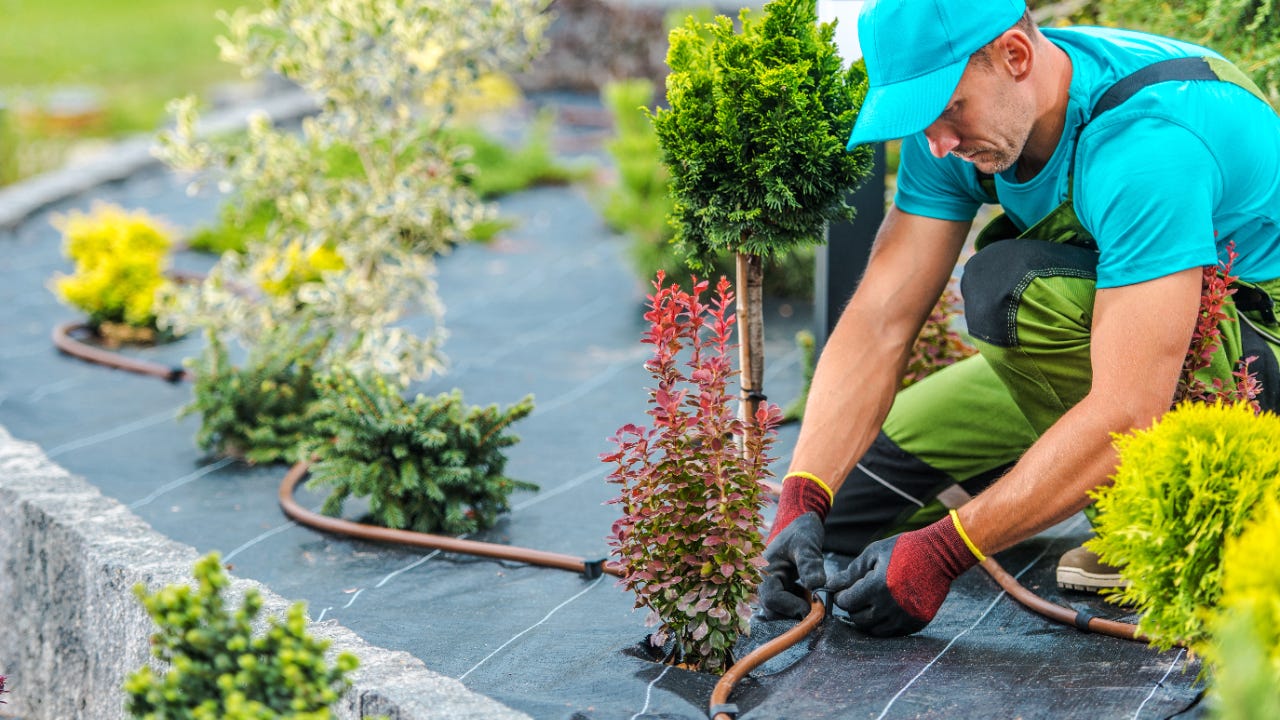A Comprehensive Overview to Creating and Implementing Effective Landscaping Solutions
The art and science of landscaping expand beyond plain appearances; they include a thoughtful assimilation of style concepts, environmental stewardship, and sensible implementation. What approaches can one utilize to make certain these landscapes not only prosper but likewise thrive in harmony with their environments?

Recognizing Landscape Style Concepts
One might wonder what foundational aspects contribute to reliable landscape style. At its core, successful landscape layout rests on several crucial principles that guide the setup and choice of elements within a room. These principles consist of unity, rhythm, balance, and percentage, each serving to create a harmonious outdoor atmosphere.
Unity refers to the natural connection amongst different parts, making sure that they collaborate aesthetically and functionally. Equilibrium can be achieved with asymmetrical or balanced arrangements, permitting the landscape to feel steady and welcoming. Proportion entails understanding the range of components in connection with each other and the surrounding setting, promoting visual consistency and comfort.

Analyzing Your Outdoor Space
Prior to implementing the principles of landscape layout, an extensive analysis of your outdoor area is essential. This initial assessment aids specify the scope of your landscaping job and makes sure that your layout aligns with the distinct attributes of your residential or commercial property. Begin by examining the measurements of your room, taking precise measurements to comprehend the readily available location for numerous aspects such as yards, paths, and patio areas.
Following, observe the existing attributes of your landscape, consisting of topography, dirt top quality, and water drainage patterns. These variables significantly influence plant selection and positioning. In addition, assess the sunlight exposure across various locations throughout the day, as this will influence the kinds of plants that flourish in your garden.
Think about the microclimates produced by structures, trees, and other obstacles, as they can affect temperature level and dampness degrees. Take note of any type of existing plants or hardscape aspects that you wish to retain or get rid of. This comprehensive evaluation lays the foundation for a educated and efficient landscape design service, ensuring that your layout is not just visually pleasing but lasting and likewise functional for several years to find.
Lasting Landscape Design Techniques
Including sustainable landscape design strategies is crucial for producing an environmentally liable outside room. These methods not just promote eco-friendly balance yet likewise boost the practical and aesthetic value of a landscape. One fundamental method is the application of native plants, which call for less water and upkeep while sustaining neighborhood wildlife. Applying effective watering systems, such as drip irrigation, lessens water waste and ensures that plants get ample moisture.

Another efficient strategy is the tactical positioning of trees and shrubs to give natural windbreaks and shade, hence lowering energy prices (Palm click resources Desert Landscaping). Rain yards can be integrated into the landscape layout to manage stormwater runoff successfully, filtering system pollutants before they get in rivers
Choosing the Right Plants
Choosing the right plants for your landscape is crucial to accomplishing both aesthetic allure and ecological harmony. The process starts with an understanding of your neighborhood environment, soil conditions, and the specific microenvironments within your landscape. Evaluating go to the website aspects such as sunshine direct exposure, dampness degrees, and existing flora will help you select plants that prosper in your one-of-a-kind setup.
Consider incorporating native plants, as they are well-adapted to local conditions, require less maintenance, and support local wildlife. Additionally, selecting a diverse range of species can enhance biodiversity while decreasing the risk of disease and insect outbreaks. It is important to examine the development routines, flowering durations, and seasonal shades of possible plants to produce a dynamic and cohesive landscape.
Additionally, think of the meant use the area; as an example, if the area will certainly experience high foot website traffic, go with durable ground covers. By thoughtfully choosing plants that straighten with both your visual goals and environmental needs, you can develop a lasting landscape that not only improves your home but likewise contributes positively to the bordering community.

Implementation and Maintenance Approaches
Once the ideal plants have been selected for your landscape, the emphasis changes to effective execution and ongoing maintenance approaches. Effective installment begins with appropriate website prep work, which includes dirt screening to determine nutrient levels and pH, complied with by modifying the dirt as needed. Very carefully prepare plants according to their development habits and light demands, making sure ample spacing to promote healthy growth.
Watering is a vital aspect of execution. Develop you can check here a watering timetable that considers the specific needs of each plant species, changing for seasonal modifications. Using drip watering systems can improve water effectiveness and minimize runoff.
Maintenance techniques should be executed to make sure the durability and vitality of your landscape. Routine tasks consist of weeding, mulching, and pruning to control growth and prevent condition. Fertilization ought to be carried out based on soil examinations, giving the essential nutrients without over-fertilizing.
Checking for parasites and conditions is necessary; early discovery can prevent significant damages. Lastly, seasonal changes to upkeep regimens, such as preparing and winterizing perennials for spring growth, will certainly make sure that your landscape remains visually enticing and healthy year-round.
Final Thought
Effective application and recurring maintenance further make certain the long life and vitality of landscapes. By incorporating these components, landscapes can be changed into lovely, useful atmospheres that advertise biodiversity and add favorably to community health.
One might question what fundamental elements contribute to reliable landscape design. At its core, effective landscape layout hinges on several essential concepts that direct the arrangement and selection of elements within a space.Choosing the right plants for your landscape is vital to achieving both aesthetic appeal and eco-friendly harmony. It is necessary to evaluate the growth routines, flowering durations, and seasonal shades of prospective plants to produce a dynamic and natural landscape.
As soon as the ideal plants have actually been chosen for your landscape, the emphasis changes to effective implementation and ongoing upkeep approaches.
 Jennifer Grey Then & Now!
Jennifer Grey Then & Now! Spencer Elden Then & Now!
Spencer Elden Then & Now! Bug Hall Then & Now!
Bug Hall Then & Now! Mason Reese Then & Now!
Mason Reese Then & Now! Bill Cosby Then & Now!
Bill Cosby Then & Now!